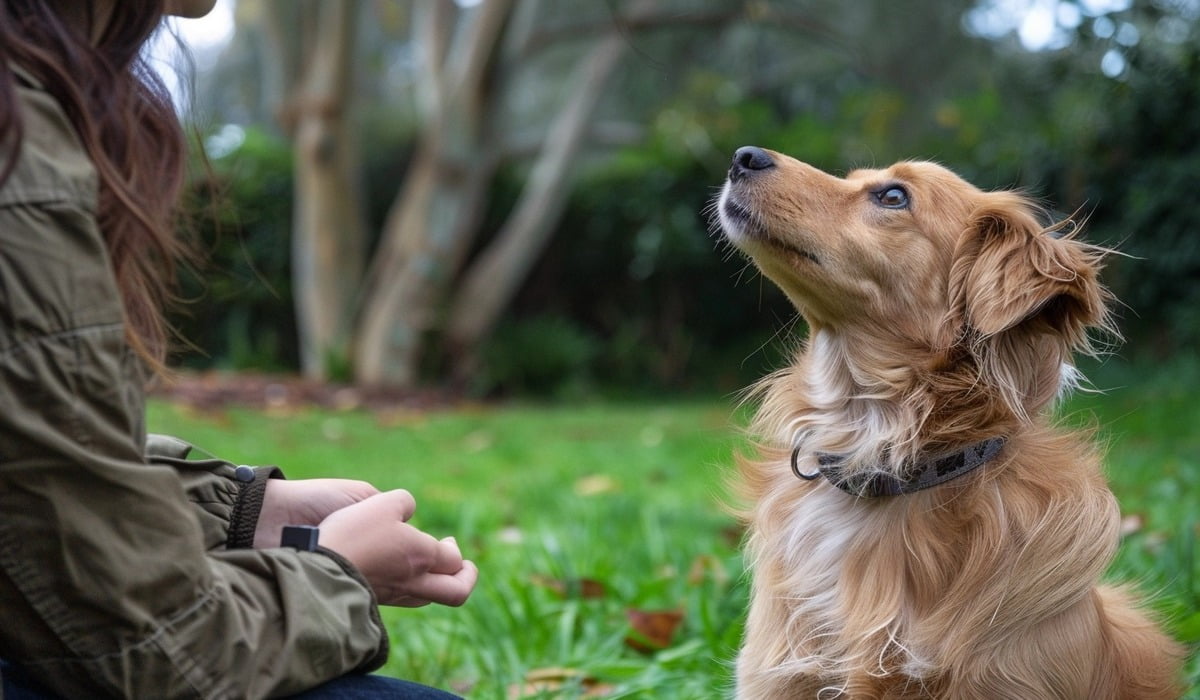Think of a clicker like that satisfying snap your fingers make – only a bit louder! A clicker is a tiny, handheld tool that makes a quick “click-clack” sound. So, what’s so magical about this simple noise? And why on earth would you want to train a dog with it?
Clicker training for dogs is a fantastic way to teach your dog all sorts of things, from basic manners to fancy tricks. It uses something called positive reinforcement, which boils down to this: When your dog does something good, they get a reward. The clicker acts like a signal, a little like giving your pup a thumbs-up to say, “Hey, that was awesome! Here’s a treat for doing the right thing.”
Understanding the Essential Dog Commands is key to ensuring an effective training process. These basic commands not only help establish a foundation for more complex skills but also support the positive development of your dog’s character and behavior.
The Science Behind Clicker training for dogs
Believe it or not, some pretty smart science backs up clicker training. It all has to do with how our dogs learn. Picture this: Your dog sits when you ask, you immediately click, and then – jackpot! – they get a tasty treat. That click becomes a super clear message to your dog that says, “What you just did? That’s the thing that earns goodies!” Over time, they’ll start trying to do that “thing” more often.
Clicker training taps into the power of timing. Unlike just saying “good boy!” (which can sometimes come a little too late), the click pinpoints the exact moment of the behavior you want.
Benefits of Clicker Training
Why should you give clicker training a go? Let’s count the ways!
Clear Communication: Clicker training is like learning a secret language with your dog. It cuts down on confusion and makes training way more fun for both of you. Think less frustration and more tail wags!
- Teaches All Sorts of Things: Want to teach your dog to spin, fetch your slippers, or even turn off the lights? Clicker training has got your back! The possibilities are nearly endless.
- Perfect for Any Dog: Whether you’ve got rambunctious puppy, a timid senior sweetie, or anything in between, clicker training works wonders. It’s gentle, effective, and lets your dog learn at their own pace.
- Strengthens Your Bond: Clicker training sessions are a fantastic way to build a deeper bond with your furry best friend. It’s all about having fun together and celebrating their wins – big and small!
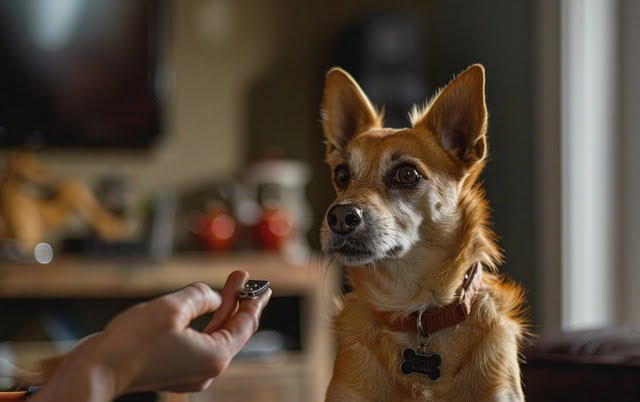
What You Will Need for Clicker Training
Getting started with clicker training is a breeze, and you won’t need to break the bank. Here’s your essential shopping list:
- A clicker: Of course! You can find these at most pet stores or online. They come in all sorts of fun colors and button styles, so choose one that feels comfy in your hand.
- Treats, treats, and more treats! Pick small, soft treats that your dog absolutely loves. Think tiny bits of chicken, cheese, or even store-bought training treats. You’ll go through these fast, so stock up!
- A quiet spot: Distractions are the enemy when you’re starting clicker training. Find a calm corner of your house or yard where you and your pup can focus.
- A sprinkle of patience: Like any new skill, clicker training takes a little practice. Don’t worry if you and your dog don’t become experts on day one. Just keep at it, and you’ll both be clicker pros in no time!
Getting Started with Clicker Training
Now that you’ve got your gear, it’s time for the fun part – unleashing your dog’s inner genius! Let’s break down the first steps of clicker training:
Loading the Clicker
Before you can teach your dog anything, you need to “load” the clicker. This means teaching your pup that the click sound equals good stuff! Here’s how:
- Grab a handful of those yummy treats.
- Click your clicker once, and immediately give your dog a treat.
- Repeat this a bunch of times – click, treat, click, treat. Keep it super simple!
You’ll know the clicker is loaded when your dog starts to perk up excitedly at the sound. They’ve figured out that click means treat, and their brain is ready to learn!
Targeting
Targeting is like your dog’s clicker training superpower. You’ll teach them to touch their nose to your hand on command. Here’s the breakdown:
- Hold out your hand, palm facing your dog.
- When they sniff or touch your hand, immediately click and give them a treat.
- Repeat this a bunch of times. Once your dog gets the hang of it, you can start adding the word “touch.” Say “touch,” present your hand, and click and treat when they boop it with their nose!
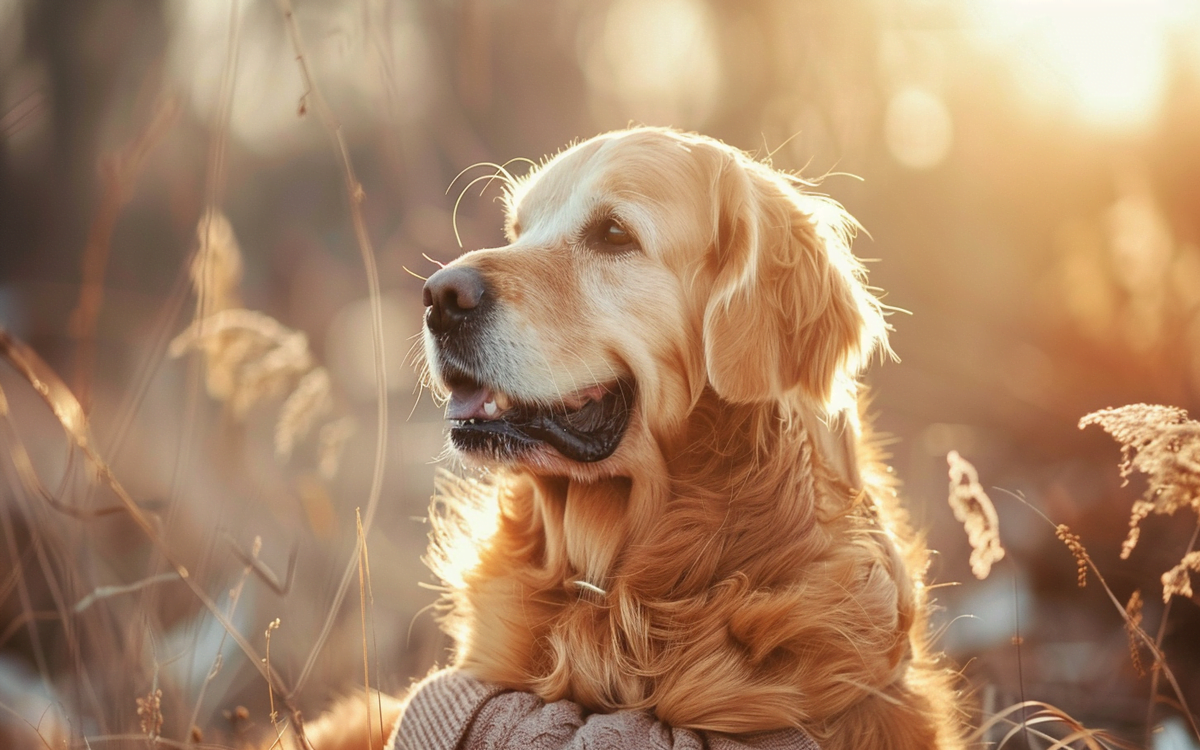
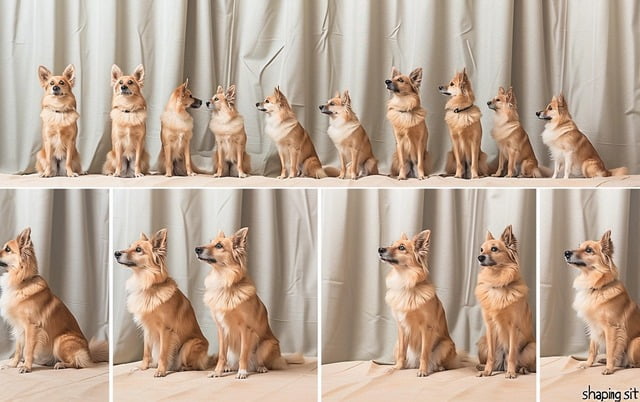
Shaping Behaviors
Shaping is where the magic of clicker training really starts to shine! It’s all about breaking down a complex behavior into tiny, achievable steps. Let’s use the classic “sit” as an example:
- Start Small: Begin by clicking and rewarding any slight movement your dog makes toward sitting. Maybe they just shift their weight back or lower their head a little. Click and treat!
- Raise the Bar: As they get the idea, start clicking only when they sit a bit lower. Ignore those half-hearted sits and wait for a tiny bit more effort.
- Aim for Perfection: Gradually, start clicking and treating only when they get closer and closer to a full sit.
- The Grand Finale: Once they’re plopping their furry behind on the floor consistently, it’s time to add the cue word “sit.” Say “sit,” and as they drop into position – you guessed it – click and treat!
Remember: With shaping, patience is key. Celebrate every little bit of progress, and your dog will be a “sit” master before you know it!
Clicker Training for Common Behaviors
Ready to put those clicker skills to work? Here’s a quick breakdown of how to tackle some popular dog behaviors:
- Stay: Start with short durations, clicking and rewarding as your dog remains still. Gradually increase the time and distance.
- Down: Reward slight shifts toward a lying down position. Add the cue “down” as you shape the full behavior.
- Come: Begin with short distances. Click and reward as your dog starts moving towards you, then reward even more enthusiastically when they arrive!
- Leave it: Teach your dog to ignore a treat on the floor. Click and reward when they look away from the treat and make eye contact with you.
- Loose leash walking: Reward your dog for each few steps they take beside you without pulling. Click and reward the second they come back to you if they get too far ahead!
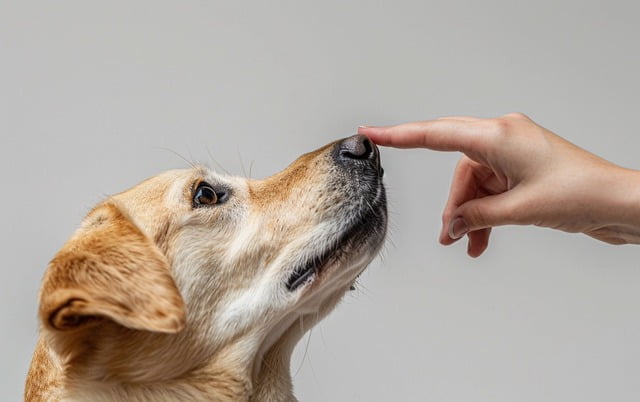
Clicker Training for Advanced Behaviors
Got a smarty-pants dog who’s mastered the basics? The sky’s the limit with clicker training! Here are some fun tricks to try:
- Paw shake: Click and reward when your dog lifts their paw even slightly off the ground. Gradually shape them into placing their paw in your hand.
- Roll over: Reward tiny rolls to the side, then work your way up to a full roll.
- Speak: Click and reward when your dog barks on cue.
- Targeting objects: Teach your dog to touch specific objects like toys or cones with their nose.
Tip: Break down complex tricks into tiny steps, and remember to click and reward every little bit of progress!
Clicker Training Troubleshooting
- My dog isn’t interested in the treats. Every dog is different! Experiment with different types of treats until you find something that makes their eyes light up. Try super stinky treats like dried fish, hot dogs, or even a dollop of peanut butter. You can also try playing a quick game of fetch or tug before training as a warm-up to get them in a motivated mindset.
- My dog clicks the clicker themselves! Oh, those clever pups! If your dog figures out how to work the clicker, it’s time for a quick strategy change. Try holding the clicker in your fist so only the button peeks out, or switch to a clicker pen with a smaller button.
- My dog is getting frustrated. It happens! Keep your training sessions short and sweet, especially in the beginning. Always end on a positive note, even if you only make a tiny bit of progress. If your dog seems overwhelmed, take a break and try again later.
- My dog is afraid of the clicker sound. Some dogs are more sensitive to noises. Start by muffling the clicker with your hand or wrapping it in a cloth. Pair the muffled click with a treat, and very gradually increase the volume of the sound as your dog becomes more comfortable.
Tips for Success
Want to make your clicker training journey a total breeze? Here are a few extra tips:
- Keep it short: Several short training sessions throughout the day work better than one long session. Aim for 5-10 minutes at a time.
- Be consistent: The more consistent you are with your cues and rewards, the faster your dog will learn.
- Timing is key: Make sure you click the exact moment your dog does the desired behavior. If you click too late, they might get confused.
- Celebrate the wins: Go wild with praise and treats when your dog does something right! Let them know how proud you are.
Conclusion
By now, I hope you’re excited to dive into the world of clicker training with your furry best friend! Remember, clicker training is about more than just teaching tricks – it’s about building a stronger bond, fostering clear communication, and making learning fun for both you and your dog.
If you’re feeling a little overwhelmed, don’t worry! There are tons of amazing resources to help you along the way. Check out online videos, clicker training classes in your area, or even books specifically on clicker training.
The most important thing is to start small, celebrate those tiny victories, and never stop having fun with your dog. Before you know it, your pup will be a clicker training superstar!
FAQs
Can I use clicker training to help with issues like barking, jumping, or leash pulling?
Absolutely! Clicker training is a powerful tool for addressing behavioral issues. Focus on rewarding calm, alternative behaviors. For example, if your dog jumps, click and treat when they sit politely instead. For leash pulling, click and reward when they walk beside you without tension on the leash.
Can I clicker train a shy or anxious dog?
Yes! Clicker training is an excellent choice for shy or anxious dogs. Because it’s so positive and gentle, it can help build confidence and reduce stress. Start with very simple behaviors, use super high-value treats, and keep sessions short and sweet.
My dog is older. Can I still clicker train them?
Definitely! Clicker training is fantastic for dogs of all ages. Many senior dogs thrive on the mental stimulation and enjoy the quality time with their owner. Just keep sessions short and adjust as needed for your dog’s energy levels.
How do I know if my timing is right when using the clicker?
Great question! The perfect click pinpoints the exact behavior you want to see more of. If your dog continues the desired behavior after the click, your timing is spot on! If they seem confused or stop the behavior, reassess whether you’re clicking at the precise moment.
Can I combine clicker training with other training methods?
Yes, absolutely! Clicker training often works hand-in-hand with other positive reinforcement methods. The clicker helps you precisely mark the behaviors you want and then you apply your chosen training techniques to further shape and solidify the good habits!

I’m Ashley Fowler and dogs have always been my companions from my earliest memories. Growing up, our family dog was my confidant, adventure buddy and sometimes partner in crime (sorry mom, about the chewed shoes!). That bond sparked a lifelong passion for learning about dogs – their unique personalities, their histories, and the special ways they fit into our lives. MDogsW is my way of sharing that passion and hopefully helping others experience the joy of finding their perfect puppy. When I’m not researching dog breeds, you can usually find me hiking with my trusty Beagle by my side or curled up with a cozy blanket, a cup of tea, and a stack of dog breed books.

